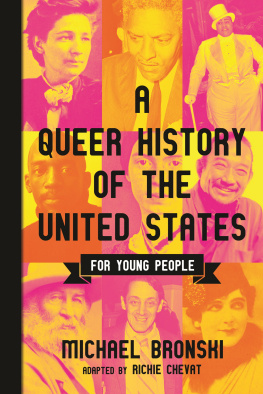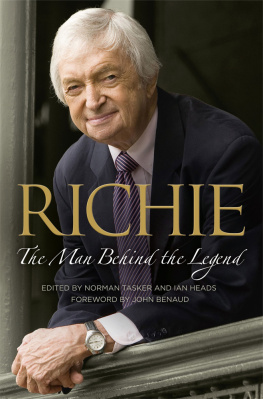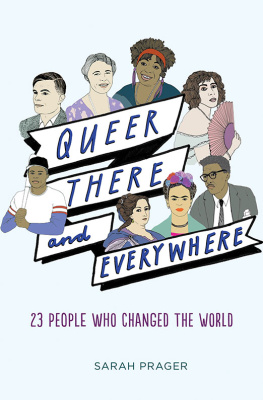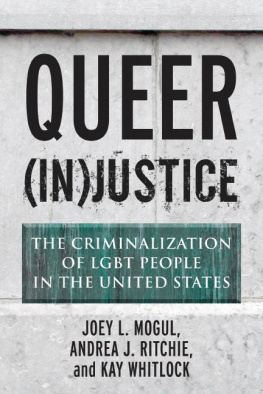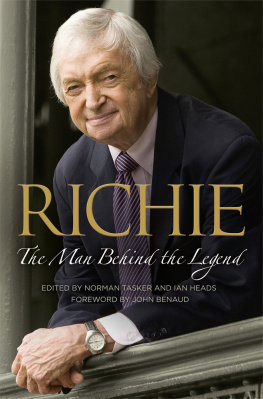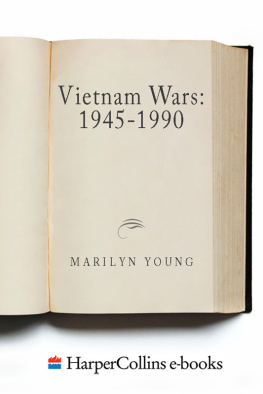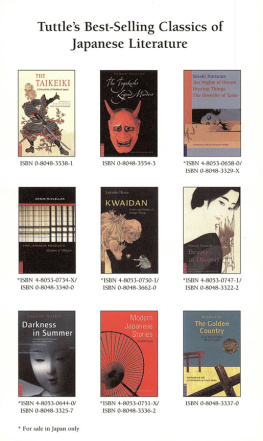Richie Chevat - A queer history of the United States for young people
Here you can read online Richie Chevat - A queer history of the United States for young people full text of the book (entire story) in english for free. Download pdf and epub, get meaning, cover and reviews about this ebook. year: 2019, publisher: Beacon Press, genre: Religion. Description of the work, (preface) as well as reviews are available. Best literature library LitArk.com created for fans of good reading and offers a wide selection of genres:
Romance novel
Science fiction
Adventure
Detective
Science
History
Home and family
Prose
Art
Politics
Computer
Non-fiction
Religion
Business
Children
Humor
Choose a favorite category and find really read worthwhile books. Enjoy immersion in the world of imagination, feel the emotions of the characters or learn something new for yourself, make an fascinating discovery.
- Book:A queer history of the United States for young people
- Author:
- Publisher:Beacon Press
- Genre:
- Year:2019
- Rating:4 / 5
- Favourites:Add to favourites
- Your mark:
- 80
- 1
- 2
- 3
- 4
- 5
A queer history of the United States for young people: summary, description and annotation
We offer to read an annotation, description, summary or preface (depends on what the author of the book "A queer history of the United States for young people" wrote himself). If you haven't found the necessary information about the book — write in the comments, we will try to find it.
A queer history of the United States for young people — read online for free the complete book (whole text) full work
Below is the text of the book, divided by pages. System saving the place of the last page read, allows you to conveniently read the book "A queer history of the United States for young people" online for free, without having to search again every time where you left off. Put a bookmark, and you can go to the page where you finished reading at any time.
Font size:
Interval:
Bookmark:


History is a novel whose author is the people.
ALFRED DE VIGNY
(nineteenth-century French poet and novelist)
1969. It was a hot night in early August. Nights in New York City are always hot in the summerthe brick buildings and concrete streets soak up the heat all day and release it after the sun goes down. This night was no different, maybe hotter. Or maybe it just felt that way because I was nervous.
I was twenty years old, going to college, and living with my parents in a New Jersey suburb, but on weekends or at night, I often went into New York City, so I knew my way around. I spent a lot of time exploring Greenwich Village, where I would go to plays, movies, and coffeehouses. On this hot August night, I wasnt going to an Italian film (the kind that never played in New Jersey) or a strange, experimental play (the kind that never played on Broadway). I was on my way to my first meeting of a group that had formed only weeks before: the Gay Liberation Front.
It may be hard for you to imagine how excited I was. On my way to that meeting I had the strange and wonderful feeling that my life was finally going to begin. I didnt know exactly how. All I knew was that just sayingor thinkingthe words Gay Liberation Front was exciting. Just putting those two words togethergay and liberationwas magical, something I would never have thought of only a few weeks earlier. Something had changed for me, and for the whole world, on the night of June 27, 1969.
It was the series of events that came to be known as the Stonewall riots, and they changed my life and the lives of people everywhere, forever, both gay and straight.
Stonewall Inn, on Christopher Street in Greenwich Village, was a club where gay men and lesbians would get together, dance, and be themselves for a few hours. The police would often raid the place, arresting customers for the crime of being gay.
In the early morning hours of June 28, when the police arrived for another routine raid, they were met with a shock. The women and men inside and many outside on the street, some of whom were drag queens, fought back, throwing bricks, trash, and bottles at the police and even attacking a police car with a parking meter they pried loose from the sidewalk. Large crowds gathered to support them. The street fighting and demonstrations happened again the next night and the night after that. Some women and men on the street that night called it an uprising. Later, the name Stonewall riots took hold of the public imagination.
And they were only the beginning. Word of what had happened at the Stonewall quickly spread. Remember, this was long before the internet and social media. The local New York City newspapers ran short news stories. But it was the queer community that really spread the news. Women and men called each other up or talked about the riots when they met on the street or in cafs and coffeehouses. Some handed out leaflets or flyers that called for public meetings or spread the word of the riots. We all wanted to share the exciting news: for the first time anyone could remember, homosexuals (as gay people were called then) had fought back. They had had enough of police violence and bullying and decided to take the power into their own hands.
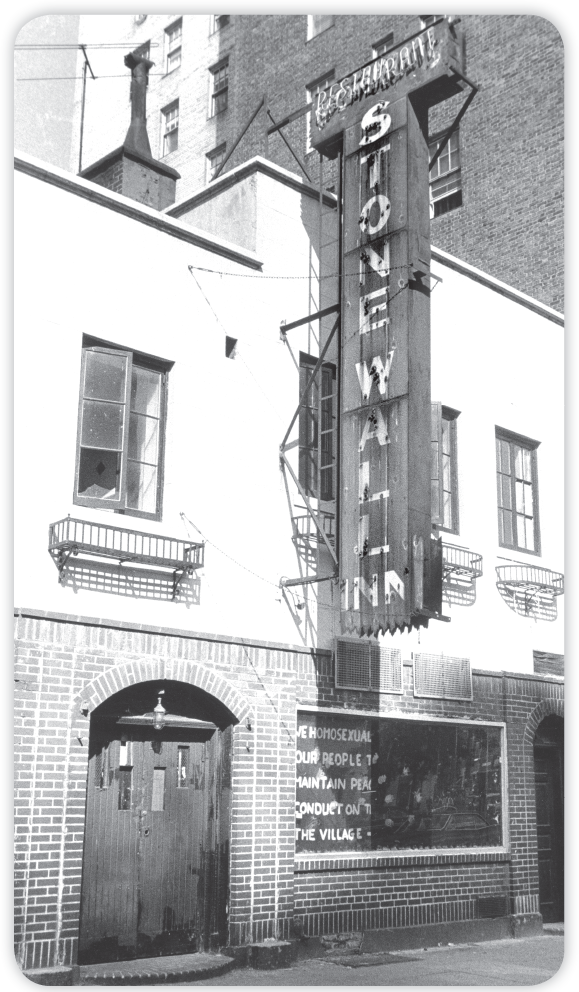
The facade of the famous Stonewall Inn in September 1969, three months after the Stonewall riots made it a landmark of LGBTQ history.
The meeting I was going to, that of the Gay Liberation Front, was formed in the aftermath of the Stonewall riots. It also took place in the context of the protest movements of the 1960s. The rallying cry for many political movements of that time was Power to the People. This was the queer power to the people moment.
African Americans had marched, held sit-ins, and been jailed by the thousands in the civil rights movement of the 1950s and 1960s, as well as in the more radical Black Power movement of the later 1960s. Women had started to form feminist groupssome even calling themselves radical feministsto fight sexism, discrimination, and violence against women. And Americans from all walks of life, but especially young people, were joining national street protests in huge numbers to voice their opposition to the war in Vietnam.
The idea behind the Gay Liberation Front was to form a political group that would fight for the social and political freedom for gay men and lesbians. The organizers saw it as a natural part of the larger freedom movements going on all around them. They called for a series of meetings and a demonstration. Some women and men wrote a leaflet that demanded the rights of homosexuals to openly love whom we please and to an unharassed lifestyle.... We refuse to accept the straight persons guilt about sex. The leaflets asked people to help bring about the day when we can walk out in the open as first-class citizens.
On July 27, nearly four hundred women and men met in Washington Square Park, a few blocks from the Stonewall Inn. They laughed, joked, sang songs, and talked politics. Four days later, many of these same people met again at a nearby progressive school called Alternate U. to start a new political movement that would fight for the rights of gay men and lesbians.
The people who showed up decided to call themselves the Gay Liberation Front. Many of the people in the room at Alternate U. were already involved in other political movements: radical feminism, civil rights, and the antiwar movement. They chose the name Gay Liberation Front to connect themselves, by association, to the National Liberation Front, the North Vietnamese group that was fighting the United States troops in the ongoing war in Vietnam.
I was there on that hot summer night. I had already been heavily involved in protests against the war in Vietnam, but I wasnt thinking about the war that night. I was thinking about a lot of other things. I was thinking that this new political cause was about me: About me being gay and not being able to tell many people. About me being gay and being bullied in high school because other boys suspected it.
And, to be honest, being only twenty years old, I was also thinking of some other things that night as I walked into the small room at the Alternate U. I was really hoping I looked OK and not like a nerd from New Jersey. I hoped that my hair looked alright. (Like a lot of men at the time, I wore mine in a long ponytail.) I hoped that people would like me.
I held my breath as I entered the room. I didnt know anyone and was immediately intimidated. The room was filled with women and mensome older, some my agewho were animated and arguing and laughing and yelling. It was more like a party than a political meeting. As I began to listen, I realized that everyone was talking about politics and what we were going to do next and how we were going to change the world.
That was fifty years ago. It would be the beginning, not only of a new life for me but of a career as well. That night, in my nervousness and excitement, it seemed that anythingmaybe everythingwas possible. This meeting was my introduction to LGBTQ politics. (The language we used was different then. Gay was a collective termas in gay peoplethat often meant gay men but also lesbians. Later, our idea of community, and language, grew and the words lesbian, bisexual, transgender, and queer were added to make LGBT and, later still, Q.) I knew that I wanted to get involved and do something for the new movement. And even though we talked about changing the world, I had no idea thennone of us didhow much the world really would change, and how much I would be a part of that change.
Font size:
Interval:
Bookmark:
Similar books «A queer history of the United States for young people»
Look at similar books to A queer history of the United States for young people. We have selected literature similar in name and meaning in the hope of providing readers with more options to find new, interesting, not yet read works.
Discussion, reviews of the book A queer history of the United States for young people and just readers' own opinions. Leave your comments, write what you think about the work, its meaning or the main characters. Specify what exactly you liked and what you didn't like, and why you think so.

